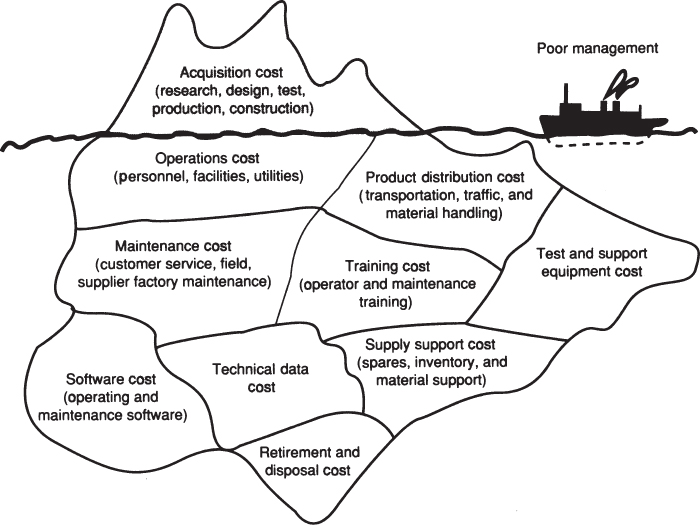Appendix B
Cost Process and Models
B.1 Life-Cycle Cost Analysis Process
Many of our day-to-day decisions, as they pertain to the design and development of new systems and the reengineering of existing systems, are based on technical performance-related factors alone. Economic considerations, if addressed at all, have dealt primarily with initial, procurement and acquisition costs only, and not the “downstream” costs associated with system operation and maintenance support. Yet these downstream costs, which often constitute a significant portion of the total life-cycle cost of a system, are highly influenced by the decisions made in the early phases of system development. In other words, the early decision-making process must consider the total spectrum of costs if economic benefits are to be gained in the long term. The consequences of the short-term approach often practiced in the past have been rather detrimental overall, as conveyed in Section 1.1.2 (Chapter 1). Total cost visibility, as illustrated in Figure B.1, is a must if the risks associated with the decision-making process are to be properly assessed.

Figure B.1 Total cost visibility.
Life-cycle costing includes the consideration of all future costs associated with research and development (i.e., design), construction, production, distribution, system operation, sustaining maintenance and support, system retirement, ...
Get System Engineering Management, 5th Edition now with the O’Reilly learning platform.
O’Reilly members experience books, live events, courses curated by job role, and more from O’Reilly and nearly 200 top publishers.

